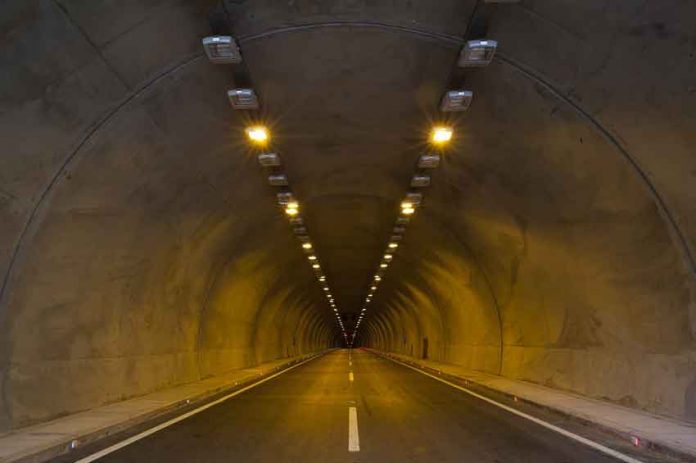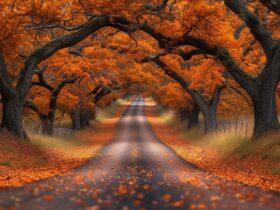Consumer adoption of peer-to-peer and ride-hailing services such as Uber and Lyft points toward a generational sea change in how consumers and businesses view transportation. These changing behaviors are combining with rising urbanization, pervasive high-speed mobile broadband, and rapid technological leaps in computing power and data center capacity to enable these new business models to drive and accelerate the development and use of autonomous mobility solutions.
Ironically, carmakers have turned to offering these same car-sharing and ad hoc use applications to drive up utilization rates. The global nature and scale of this change has major implications for the adoption and use of autonomous “Mobility-as-a-Service” among consumers and businesses alike. “Being driven” by intelligent, pilotless vehicles will represent the essential nature of future transportation.
Strategy Analytics expects that, as we move toward SAE level five vehicle autonomy, these mega trends will combine and enable Mobility-as-a-Service to open the door to an emerging new market that we refer to as the “Passenger Economy.” This Passenger Economy represents the value of the products and services derived from the use of fully autonomous, pilotless vehicles, including the indirect savings in both time and resources generated by the use of pilotless vehicles.
Intel, seeking to enable the computing and connectivity technologies that will drive this market, has engaged Strategy Analytics as a partner in the preparation of this report to validate the hypothesis that this Passenger Economy is on the horizon and that it holds massive economic potential. In assessing this opportunity, Strategy Analytics and Intel aim to start a conversation that explores the catalysts for change, frames the value or economic opportunity, and begins to build use cases that can enable business decision-makers to explore and develop actionable change strategies.
Passenger Economy opportunity
The Passenger Economy represents a US$7 trillion global opportunity in 2050. The Passenger Economy will stimulate value creation from the adoption of Mobility-as-a-Service and other new mobility services as well as emerging new applications and services as well as from savings in time and money associated with vehicle use and from the resulting freedom of movement.
Our research finds that autonomous driving technology will enable a new Passenger Economy worth US$7 trillion in 2050. It will drive change across a range of industries, displacing vehicle ownership with Mobility-as-aService, and defining a new landscape of concierge and ride-hailing services, as well as pilotless vehicle options for businesses in industries like package delivery and long-haul transportation.
Consumer use of a range of Mobility-as-a-Service offerings will account for US$3.7 trillion, nearly 55 percent of all revenues. The evolution and mass adoption of Mobility-as-a-Service by consumers is central to the emergence of the Passenger Economy. Consumers will continue to forgo ownership as they seek out economical, self-directed personal mobility. The range of Mobility-as-a-Service offerings will explode as autonomously operated vehicles become ubiquitous and personalized services emerge.
Business use of Mobility-as-a-Service will generate US$3 trillion in revenues, roughly 43 percent of total revenues. Industries like transportation and freight delivery and sales and service fleets will utilize pilotless vehicle technology to reshape their fundamental businesses and to leverage new opportunities.
New emerging applications and services will account for US$203 billion of revenues. These revenues will be generated from the use of a range of new use cases for pilotless vehicles in industries like hotel and hospitality, restaurant and dining, tourism and entertainment, healthcare, and service delivery of all kinds.
In terms of the other economic and social impacts of the Passenger Economy Strategy Analytics expects that conservatively, 585,000 lives can be saved due to pilotless vehicles in the era of the Passenger Economy from 2035 to 2045. This is nearly as many people that live in the city of Dusseldorf, and would fill the Melbourne Cricket Grounds nearly six times over.
Pilotless vehicles will free more than 250 million hours of consumers’ commuting time per year in the most congested cities in the world. Reductions in public safety costs related to traffic accidents will amount to more than US$234 billion over the Passenger Economy era from 2035-2045.
Pilotless vehicles will converge
The onset of autonomous pilotless vehicles will converge with a number of important changes in consumer behavior that will combine to underpin the emerging Passenger Economy. We are seeing today the first green shoots of these growing shifts in consumer behavior. These changes are the leading edge of this opportunity and will be driven by several market forces we see emerging today.
Mobile “Connectedness”: Mobile connectivity has reached nearly every consumer demographic and geographic nexus on the planet and continues to be found in an expanding number and variety of connected devices, automobiles and machines.
By 2050, nearly two-thirds of the global population will live in urban environments . A key factor driving this trend is the desire to be closer to work and leisure. As population density rises in cities, so too will the cost of living. People will flock to suburbs further from the city center to compensate, driving commute times higher and outstripping the ability of public transport infrastructure to fully meet consumer mobility needs.
Vehicle-Sharing and the Rise of Transportation Networks – Mobility-as-a-Service: Ride-hailing companies such as Uber and Lyft are pursuing pilotless fleets with the ultimate goal of obviating the need for drivers and converting what is currently a taxi alternative into, in essence, a public transportation network of shared vehicles comprising a range of vehicle types. The transportation environment will be increasingly dominated by Uber, Lyft, Zipcar and a host of other ride-hailing and car-sharing services that are already driving down owned-vehicle usage in some metropolitan areas. The global nature and scale of this change has major implications for the long-run potential for the Passenger Economy.
Mobility-as-a-Service represents the value that will be created by the shift in transportation expenditures by consumers and business from vehicle ownership, taxi use, rental car use and public transport to the use of thirdparty transportation services based on autonomous vehicles. Mobility-as-a-Service solutions will represent the essential nature of future transportation and open the door to the passenger economy of the future.
Traffic congestion, pollution and safety are significant issues for every city in the world. Congestion is bad in emerging and mature markets alike. City governments in Nairobi, Kenya; Delhi, India; Istanbul, Turkey; and São Paulo, Brazil report that congestion is costing residents and businesses in each city millions of dollars per day in productivity. The World Bank estimates that over 1.3 million people die in traffic accidents each year. Over 90 percent of those deaths are in emerging markets.
To combat this, local, state and federal governments have their collective thumbs on the scale influencing transportation decision-making through the increased application of tolling and road-use charging and restricting cars from driving on particular streets and neighborhoods either for specified time periods or completely.
Major metropolitan areas including Stockholm, London, Singapore, Paris and Hamburg are restricting areas from vehicle traffic, taxing private vehicle owners for driving into the city center, or otherwise discouraging or forbidding the use of vehicles within city limits.
The pressures of mounting traffic congestion and the correlated emissions will drive regulators to include pilotless vehicles as a part of their larger public transportation networks of trains, trams, subways, busses or automated vehicles.
In the future, public officials and city planners will treat transportation in the same manner as they treat real estate – allocating transportation resources for commercial and personal applications varying by type and time of day and dynamically allocating those resources to suit varying requirements. Some cities may choose to own the vehicle networks not unlike existing public transportation.
Valuing the Passenger Economy
The Passenger Economy represents a global US$7 trillion opportunity in 2050. Autonomous driving (AD) technology will enable a new global Passenger Economy worth US$7 trillion annually in 2050.This economy enabled by autonomous vehicles will drive change across a range of industries, displacing vehicle ownership with Mobility-as-a-Service offerings and defining a new landscape of concierge and taxi services, as well as pilotless vehicle services for businesses in industries like package delivery and long-haul transportation.
In general, consumer and business use of Mobility-as-a-Service propositions are expected to deliver the greatest value since they involve shifts away from vehicle ownership. This is the direct effect of autonomous vehicles converting drivers to passengers. Businesses will be a significant driver of autonomous vehicle sales in the early commercial stages of pilotless vehicle sales.
Consumer use of Mobility-as-a-Service offerings will account for nearly 55 percent of these revenues, or US$3.7 trillion. The evolution and mass adoption of Mobility-as-a-Service by consumers is central to the emergence of the Passenger Economy. This is the disruption of the one-to-one coupling of car ownership and personal mobility. Consumers will continue to forgo ownership as they seek out economical, self-directed personal mobility. The range of Mobility-as-a-Service offerings will explode as autonomously operated vehicles become ubiquitous and instantaneously personalized services emerge. Peer-topeer and networked ride-sharing models of today will be largely displaced by mobility service providers offering mobility for uses ranging from work-related applications or simply enabling movement around urban or suburban areas.
Mobility-as-a-Service
Business use of Mobility-as-a-Service will generate US$3 trillion in revenues in industries like transportation and freight delivery, sales and service fleets, and a range of medium- and heavy-duty applications in industrial, mining and agriculture, and other production-centric and consumer goods industries. The adoption and use of Mobility-as-a-Service within the transportation industry will be a strong driver of autonomous vehicle and truck sales in the early years of the Passenger Economy.
Businesses will make use of light-, medium- and heavy-duty trucks for transportation, delivery, sales and service fleets, and other business class transport vehicles within Mobility-as-a-Service models and other new mobility services. In the transportation market, the impact of these services will be global as it will relieve long-haul driver shortages around the world. Developed markets will drive the early adoption of these services, accounting for two-thirds of these revenues initially.
US$200 billion in revenues will be generated from rising consumer use of new, innovative applications and services that will emerge as pilotless vehicle services expand and evolve. As commercialization gains steam in 2040-2050, consumers will generate an increasingly large share of value in the Passenger Economy from their adoption and use of innovative new applications and uses cases in a range of service businesses ranging from dining to medical to entertainment.
They may involve shifts in business models to more usage based service revenues or to location based services where the service comes to the passenger rather than the passenger going to a specific vendor location. This is already emerging today in the decline of shopping malls as “destinations.”
When we assess the impact of the Passenger Economy on a regional basis, it is our view that developed markets will account for nearly three-quarters of these revenues in the early commercialization stages of pilotless vehicles. In emerging markets, vehicle ownership trends and a lack of infrastructure will throttle early adoption, but regulators’ long-term needs to combat congestion, pollution and safety issues in densely populated cities in this region will also fuel growth.
As the market ramps in 2050, emerging markets come to account for larger share of the total. Our estimated allocation of the global US$7 trillion in revenues in 2050 by region is provided below.
It is important to remember that the use of pilotless vehicles requires a significant paradigm shift on the part of consumers in terms of their perceptions of safety and reliability of the vehicles themselves. The use of pilotless vehicles will also require a major change in consumer views toward vehicle ownership (which are already underway) and a significant change of behaviors toward wider use of Mobility-as-a-Service offerings.
The technology to deliver fully autonomous vehicles is developing rapidly but is still a number of years away. And the regulatory and potential infrastructure changes required will happen over the next several generations instead of the next few years.
As these forces collide and evolve over time, they combine to create a “long tail” of services adoption as the early sales of level five pilotless vehicles ramps through 2035. The early opportunity is still significant as momentum builds for early service offerings in the 2030 to 2035 time period, when we estimate the cumulative revenues for the period can reach toward US$800 billion.
Edited excerpt from report: Accelerating the Future: The Economic Impact of the Emerging Passenger Economy


















